What Were Poodles Bred For? 11 Facts, Past Roles, and History
Poodles are best known for their distinctive appearance. They also have a long, fascinating history. And when it comes to what Poodles were bred for, they’ve performed a variety of jobs.
But they’re also clever, playful, and a bit quirky. Here’s a brief history of the Poodle, the jobs the breed has had, and a few facts about why Poodles remain so popular.

The Origin of the Poodle
Poodles have a long association with fashion and all things French. But that’s not where the breed originated.
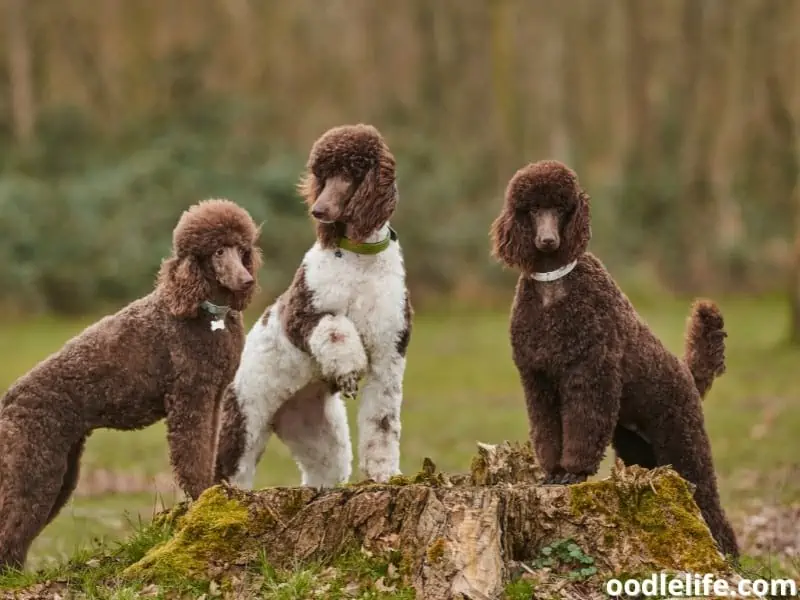
Poodles originated in Germany. The name ‘Poodle’ is a corruption of the German word ‘Paddeln.’ It’s the German word for ‘paddle’ and combined with ‘Hund,’ or ‘dog,’ translates to something like ‘paddling dog’ or ‘dog that splashes.’
A more colloquial interpretation is the less dignified ‘puddle dog,’ which is apt but at odds with the clownish Poodle’s aspirations towards elegance.

The French don’t do much better. Their word for a Poodle is ‘caniche,’ which means ‘duck dog.’
What Were Poodles Bred for?
Terriers began as ratters, Dachshunds hunted badgers, and Pointers stood sentry at a crucial point on a hunting trail.
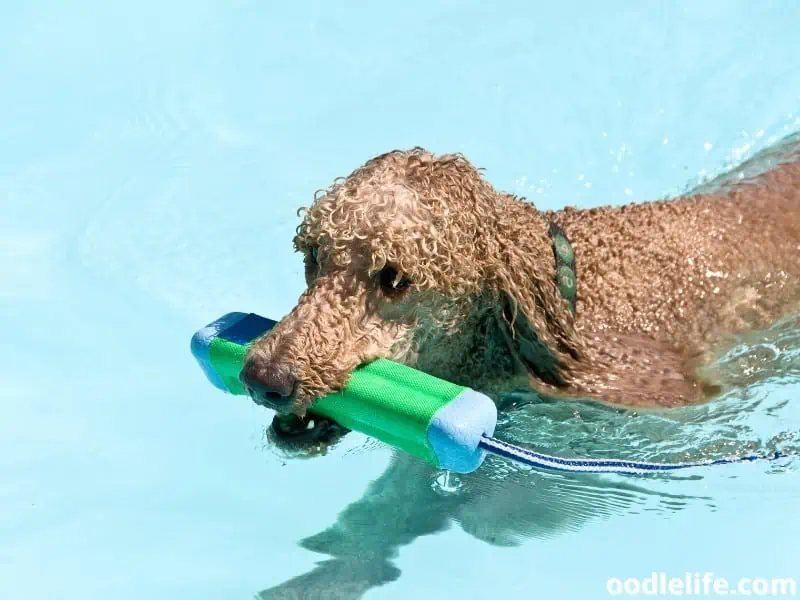
Poodles are no exception. Germans created the Poodle because they needed a dog that could retrieve prey from the water. Hence all that talk about ducks and paddling.
For that reason, Poodles have webbed toes to help them swim.
The Real Reason for the Poodle Cut
The Poodle’s history as a water retriever also helps explain the distinctive Poodle show cut.
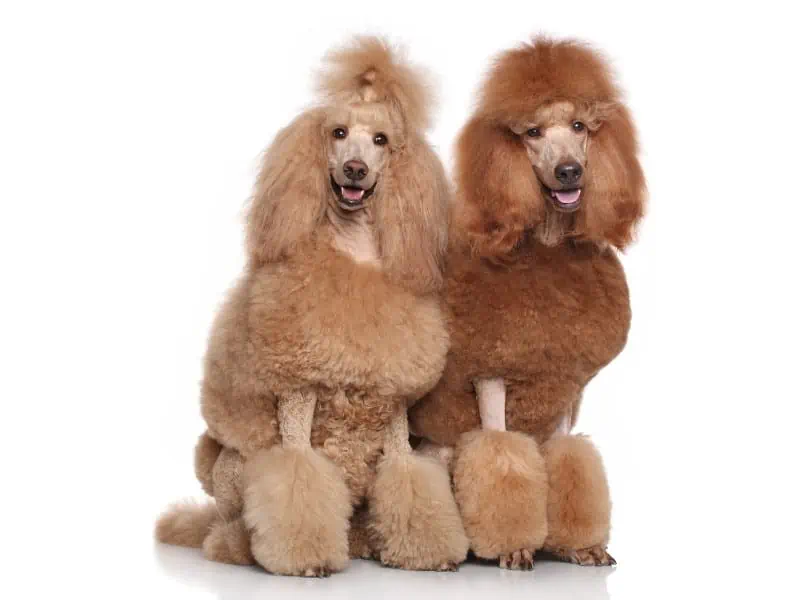
These days we associate it with dog shows, but a lot of thought went into curating the Poodle’s signature look.
Poodles have naturally curly and woolly coats. They’re famously hypoallergenic, but they retain lots of water after swimming. That’s not ideal for hunters looking to retrieve their prey quickly and move on to the next shoot.
With that in mind, Poodle owners began strategizing ways of increasing the Poodle’s efficiency while protecting them from the often-icy water temperatures.

Enter the Poodle cut. It protects all the vital parts of the Poodle, including its:
- Brain
- Chest
- Knee joints
- Hips
Sometimes called the continental clip, the look freed up Poodles to move quickly through the water while ensuring they didn’t suffer from environmental factors.
Poodles and the Circus
Duck retrieving was what Poodles were bred for originally, but it wasn’t their only job. Shooting waterfowl went out of favor sometime in the 19th century. That left the energetic Poodle without a job.

But Poodles remained tremendously popular because of how intelligent they are. That made them the obvious choice as a canine addition to the increasingly popular animal circuses.
While not bred for the part, Poodles were natural circus performers. We mentioned their propensity for comedy earlier, and even the modern Poodle has a healthy inborn sense of the ridiculous.
They’re also athletic dogs. Combined with their intellect, Poodles were the perfect circus animal. A motivated Poodle learned new tricks quickly, and their playful antics brought the crowds in with every new circus stop.
Poodles in Wartime
Another job Poodles were briefly considered for was war work. Like the circus, this isn’t what Poodles were bred for. But during the Second World War, the Allies used a variety of animals to help the war effort, and dogs were one of them.
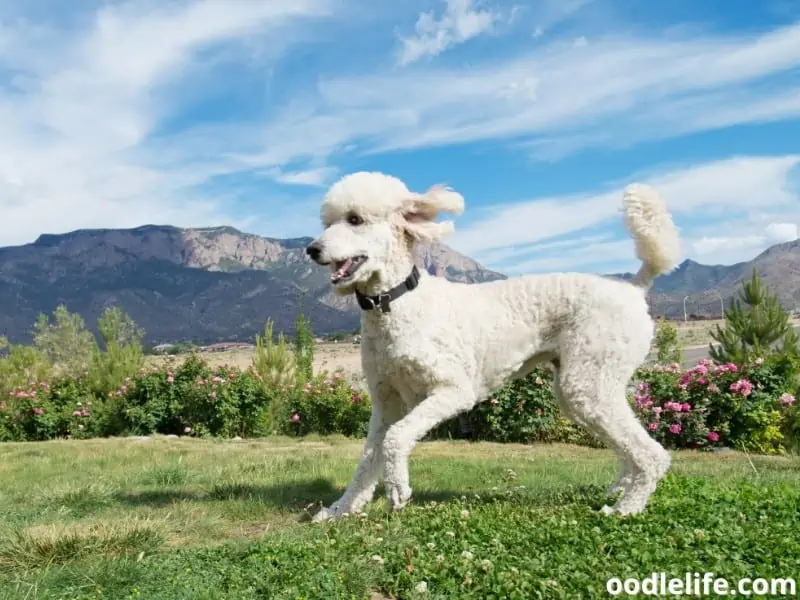
Poodles were a popular choice because they were fast learners and energetic. The Allies began training them in 1942 but didn’t get far. Poodles were still on America’s shortlist of working war dogs in 1943 but never made it overseas.
Although Poodles are clever and exuberant, their fast-growing coats were a significant drawback. They required too much careful grooming to be practical in trench warfare.
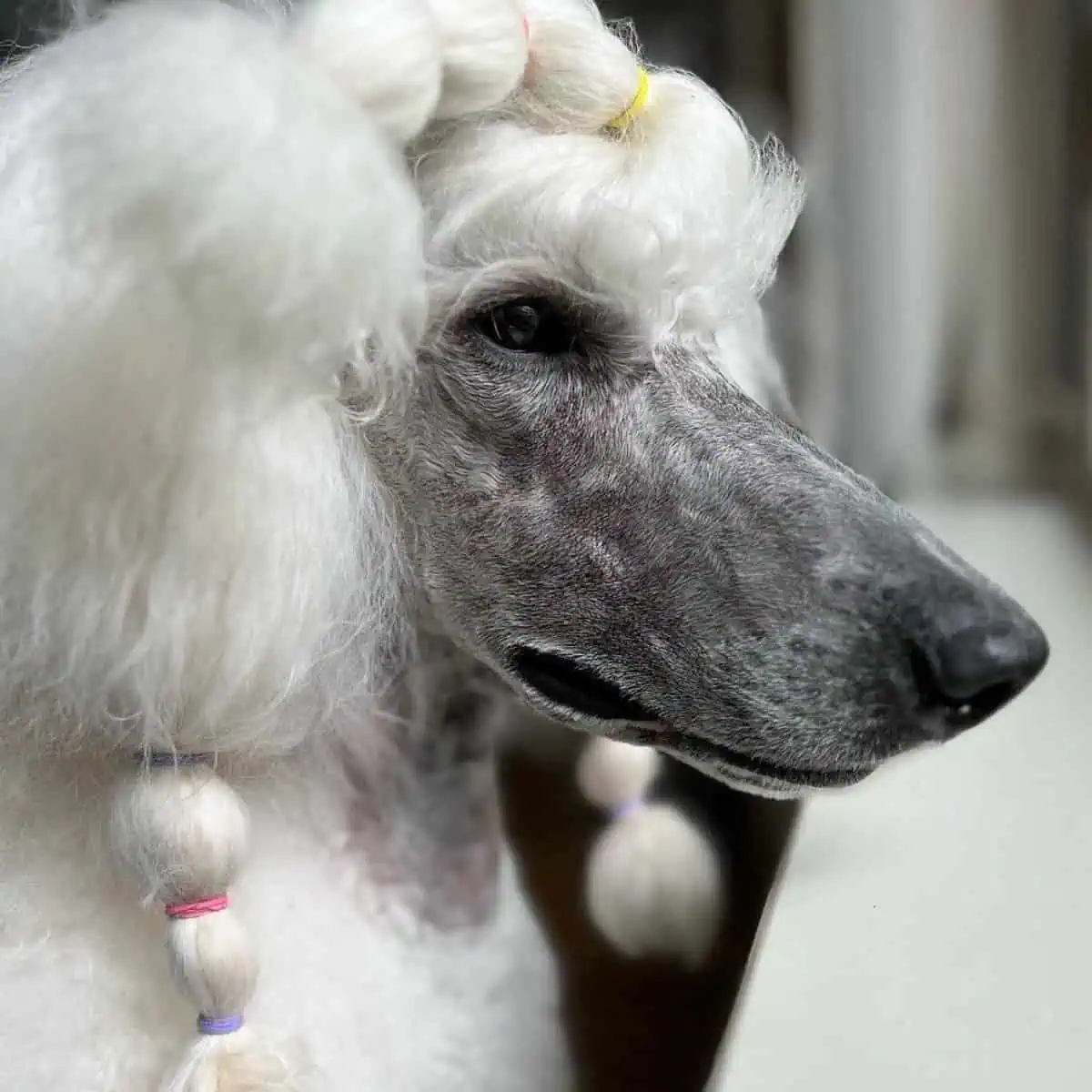
But the military was reluctant to let go of the Poodle as a service animal. It was one of the most trainable and eager-to-please canines they could work with.
Seizing on the Poodle’s strong sense of pack loyalty, they became domestic guard dogs for many military institutions on the home front.
Various Sizes of Poodle
When discussing what Poodles were bred for, we focused on the Standard Poodle. That’s because, for a long time, that was the only size there was.
More diminutive models would have weighed as much as the average duck they needed to retrieve and didn’t appear on the scene until the twentieth century.
When they did, it was because people wanted a smaller, more manageable Poodle that could live comfortably in an apartment.
These days, in addition to the Standard Poodle, breeders also raise Teacup and Miniature Poodles. Like their larger contemporaries, they are people-pleasing dogs who train quickly.
Crucially, they expend as much energy as a Standard Poodle, so while they are compact enough to live in apartments, they still benefit from long walks and play sessions.
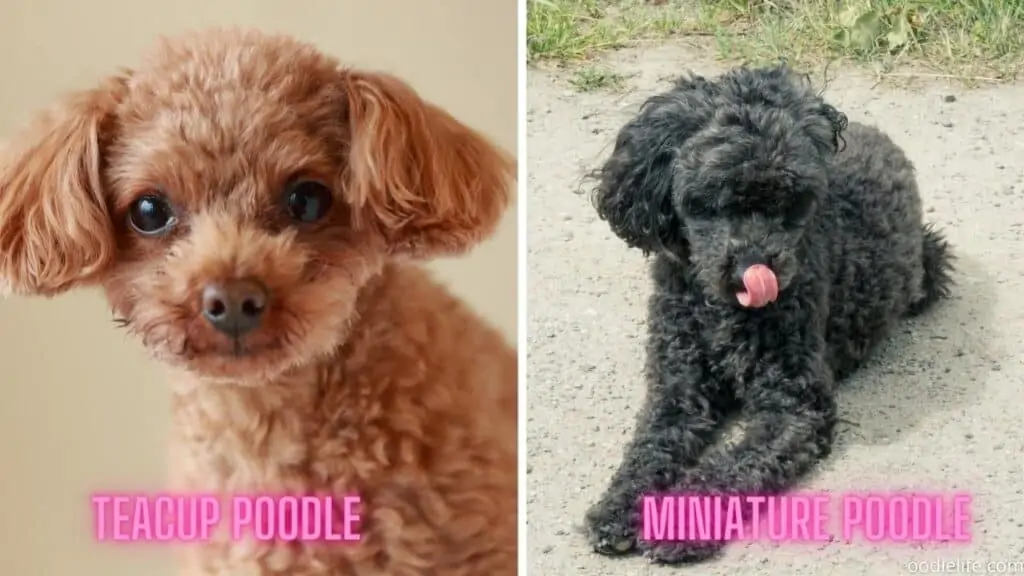
Poodles Have Hair, Not Fur
Another fact about the Poodle is that they have hair, not fur. It sounds like hair-splitting, but it’s an important distinction when considering the type of dog you want.
Dogs with hair typically have two coats. As the hair lengthens, it falls off. Depending on the time of year, the amount of hair and dander dogs shed varies, especially in breeds prone to seasonal shedding.
Crucially, unlike fur, hair lengthens over time. Even dogs that don’t shed seasonally will shuck hair that becomes too long.
Poodles don’t have fur. While the fur might grow out, it doesn’t fall off when it gets unmanageable. That’s why routine bathing and grooming are necessary to prevent mats.
Having hair rather than fur is also what earns Poodles their hypoallergenic status. While all dogs produce dander, Poodles shed little to no dander, ensuring owners won’t react to their coats. If allergies are an issue, you can adopt a Poodle.
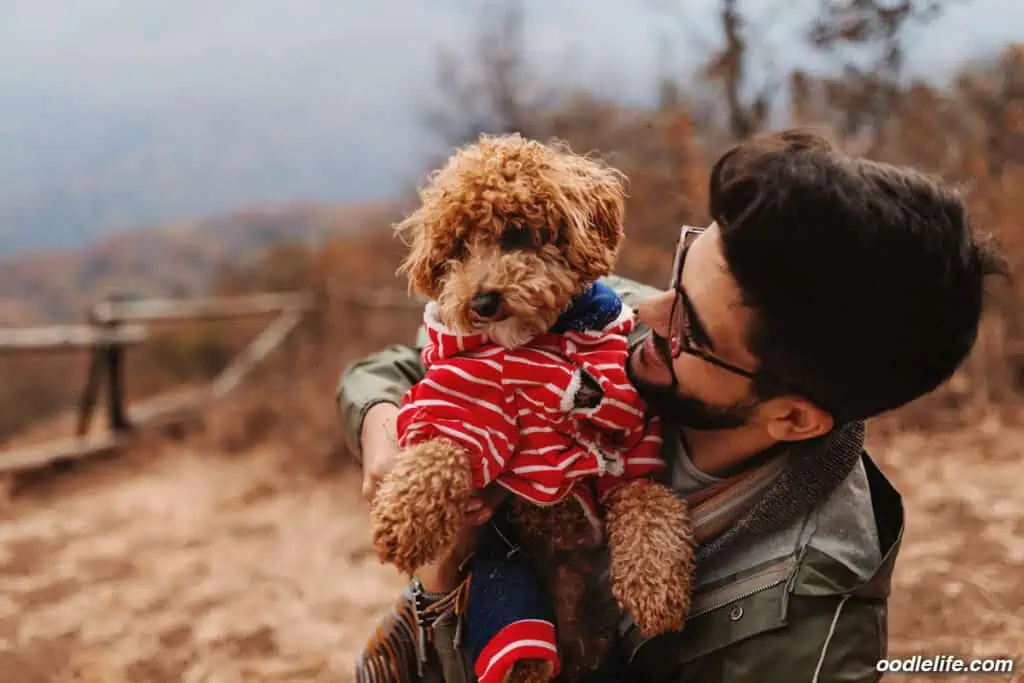
There’s More Than One Way to Trim Your Poodle
Speaking of hair, there are several ways to style a Poodle. The best-known cut is the continental clip we discussed earlier. But that’s not the only way to style a Poodle.
Other coat cuts include:
- Modified Continental Clip
- English Saddle
- Puppy Clip
This last cut is exclusive to Poodle puppies that feature in dog shows. Their limbs are too small to shear the way you would an adult dog, so instead, they get an even trim across the entire body.
The Modified Continental Clip is sometimes called the Historically Correct or Hunter’s Clip. Whereas the modern Continental Clip keeps the bulk of the Poodle’s hair long enough to style, the Modified Clip shortens the hair and facilitates athleticism.
The other distinction is that the hip rosettes of the Continental Clip are optional.
An English Saddle cut gives more coverage to a Poodle’s hock. The hair is left longer than in a Modified Continental Clip, and it uses a closer shave on the face and legs. The fur on the tail is also left long and well-groomed.
All of these require considerable grooming to maintain.
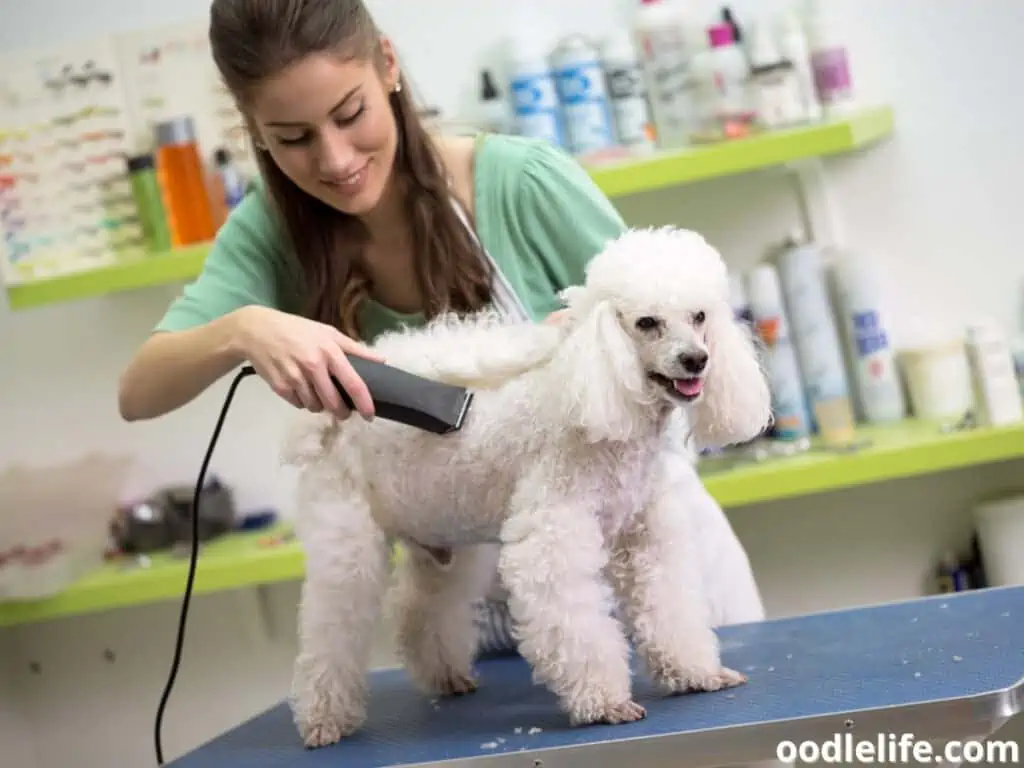
A Team of Poodles Ran the Iditarod Dogsled Race
In 1988, a dog musher named John Suter famously attempted to lead a team of Poodles in the Iditarod Dogsled Race (Washington Post article).
They seemed like an excellent fit because of their high energy levels and enthusiasm. But the cold Alaskan weather mixed badly with the Poodle’s water-retaining hair. As the race progressed, more and more of Suter’s dogs were eliminated due to matting and cold weather.
Subsequently, a rule was added to the race stipulating only northern breeds designed for cold weather could participate.

Poodles Have Had Many Famous Owners
Poodles have always been popular, and many have been the beloved pet of famous Americans.
Of these, Elvis Presley is one of the most famous Poodle devotees, and his home in Graceland included mementos of his dogs. He was also notorious for gifting Poodles to unsuspecting girlfriends.
Of Elvis’s various Poodles, one of the best-known is Champagne.
Other famous Americans to own Poodles included:
- Elizabeth Taylor
- Lucille Ball
- Marilyn Monroe
- Katherine Hepburn
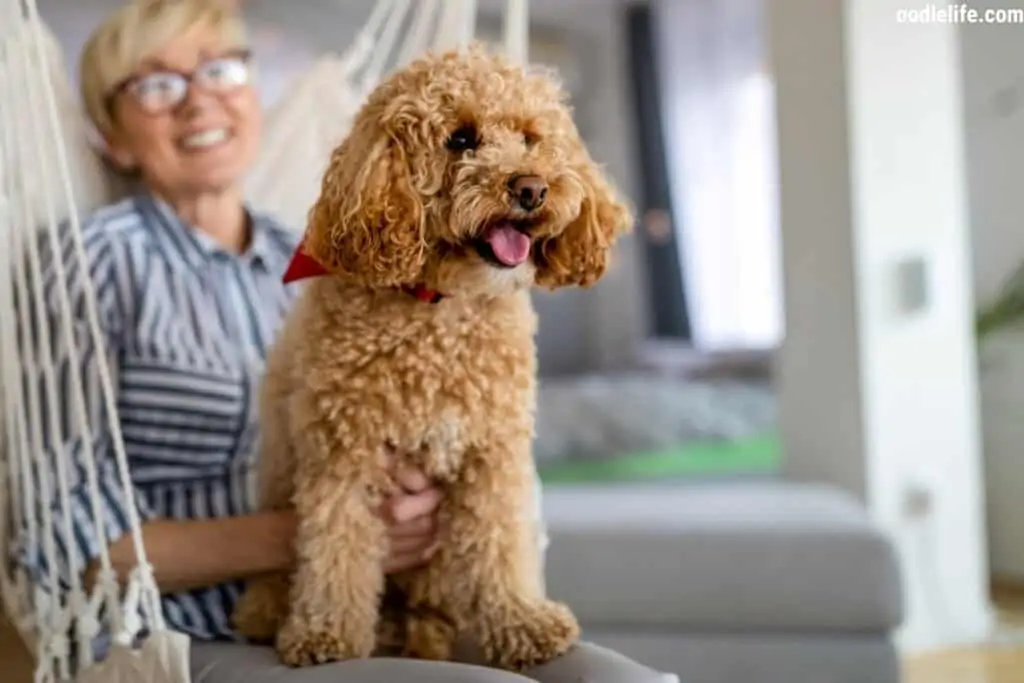
One Poodle Can Work an Elevator
Nala, the Toy Poodle, worked as an emotional support animal at St. Paul’s nursing home, where she comforted Alzheimer’s patients. Nala worked out that pressing the elevator buttons would take her from floor to floor.
Her small stature stopped Nala from traveling independently, but not for want of trying!
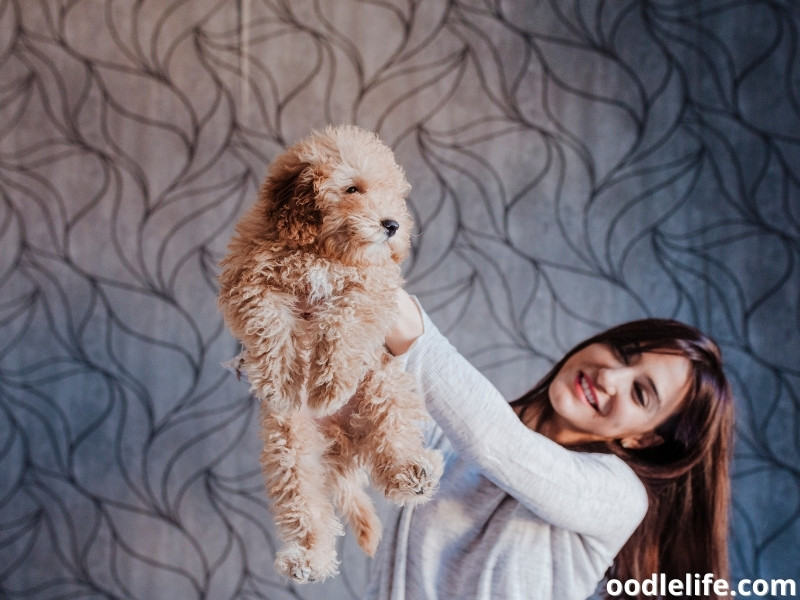
Summing Up
So, that’s what Poodles were bred for and why they remain popular. Poodles are loveable, sometimes ridiculous, and always intelligent dogs. Throughout history, they have worked as retrievers, circus animals, and guard dogs.
Their enduring popularity resulted in Poodles of varying sizes. One thing that remains consistent is the Poodle’s active personality and loyalty to its owners.
You don’t have to be famous to love the Poodle; you just need to stop life’s bustle long enough to be charmed by its readiness to laugh at its antics, colorful history notwithstanding.